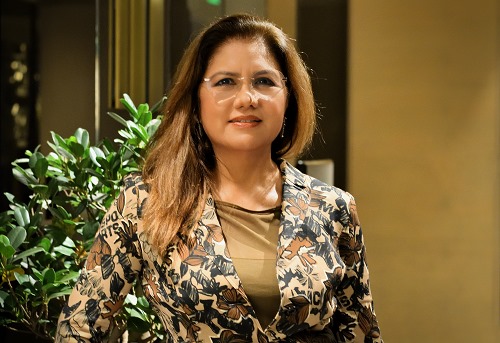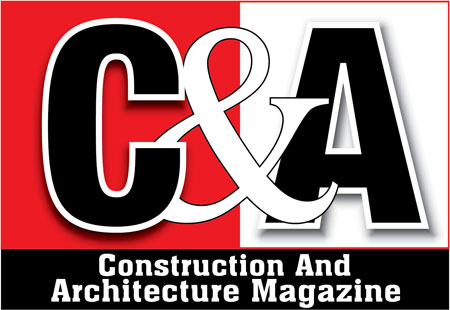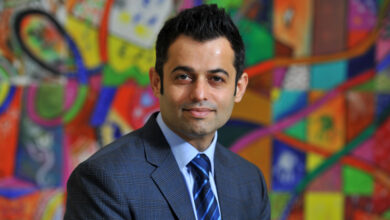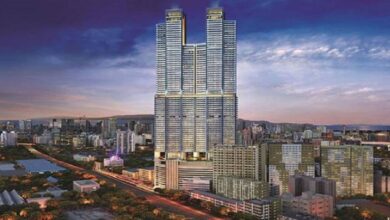
Integrated townships with open spaces are revolutionising festive season homebuying trends
By Ms. Manju Yagnik, Vice Chairperson of Nahar Group and Senior Vice President, NAREDCO, Maharashtra
As the Indian real estate market gears up for Akshay Tritiya 2025, integrated townships especially those with abundant open spaces are emerging as top choices for homebuyers seeking not just homes, but elevated living experiences. The festival, known for its auspicious symbolism and traditional alignment with property investments, has once again brought renewed focus to residential buying patterns, particularly in metros like Mumbai.
In the past, homebuying during Akshay Tritiya was largely influenced by discounts, payment plans, and limited-period offers. However, in 2025, a shift is clearly visible. Today’s urban homebuyer is looking beyond transactional perks and is prioritising the long-term value offered by integrated townships, specifically those that provide green, open environments within city limits.
This evolving preference is not a passing trend. It is rooted in a deeper psychological and lifestyle need brought about by dense urban living. Buyers are no longer satisfied with compact apartments in isolated buildings. Instead, they are gravitating toward residential developments that offer both community living and access to open areas—gardens, walking trails, recreational zones, and leisure spaces all within a self-sustained township ecosystem.
One such development shaping this shift is the expansive township in Chandivali, a rapidly evolving micro-market in Mumbai. Situated in the heart of the Mumbai Metropolitan Region (MMR), Chandivali has steadily become synonymous with well-planned residential clusters that prioritise green zones without compromising on connectivity or convenience. Integrated developments here are characterised by their thoughtful planning, where open lawns, landscaped pathways, and vibrant community areas are not add-ons but central to the overall design.
The appeal of open-space townships peaks during the festive season, as families actively explore upgrades or first-time home purchases. In March 2025, Mumbai recorded over 15,600 property registrations, with stamp duty collections hitting new highs—signaling strong buyer sentiment ahead of Akshay Tritiya.
Chandivali, in particular, is seeing rising interest within MMR, driven by campaigns that highlight not just price but enhanced lifestyle offerings. Green, open spaces have become key differentiators, drawing homebuyers seeking better livability and long-term value.
For the contemporary homebuyer, especially families with children and elderly members, the advantages of such integrated communities are clear. Open spaces serve as daily wellness anchors—offering room for physical activity, mental relaxation, and social interaction. These elements contribute to a higher quality of life, particularly in high-density urban contexts like Mumbai, where public parks and recreational zones are scarce and often overburdened.
Moreover, open-space townships in areas like Chandivali have an edge due to their proximity to key infrastructure. The MMR’s improving road networks, metro connectivity, and access to business hubs like Powai and Andheri make these developments highly attractive for working professionals who are seeking a lifestyle upgrade without relocating to distant suburbs. This strategic blend of green living and urban connectivity is proving to be a major factor driving buyer decisions this festive season.
Developers are also evolving in response to this trend. Marketing narratives around Akshay Tritiya now prominently feature visuals of open courtyards, tree-lined boulevards, and wellness zones. The emphasis is less on limited-time offers and more on the lasting benefits of township life. In Chandivali, for instance, leading real estate firms are curating site experiences that showcase not just sample flats but the township’s overall layout—highlighting where residents will walk, gather, or unwind on a regular basis.
Importantly, this movement is not limited to high-end buyers. Mid-segment customers are equally drawn to the integrated township format, particularly when it comes with the assurance of long-term value and enhanced livability. A green, well-maintained environment within the development is seen as a non-negotiable feature, rather than a luxury.
As Akshay Tritiya nears, industry analysts anticipate that the preference for open-space-centric townships will only grow stronger. This is partly driven by a demographic shift urban families are becoming more health-conscious, experience-driven, and focused on balance. But it is also reflective of a larger market evolution, where buyers are willing to invest in homes that promise more than just four walls.
The MMR market, already one of the country’s most dynamic real estate zones, is adapting quickly. Developers who can offer a compelling combination of location, connectivity, and green living are expected to lead the festive season sales. Chandivali, with its growing township culture, is well-positioned to set the tone not just for Akshay Tritiya, but for the broader future of residential real estate in Mumbai.
The 2025 festive season is showcasing a clear departure from traditional homebuying triggers. Integrated townships with expansive open spaces are emerging as key decision-making factors, particularly for buyers looking for a holistic lifestyle. As consumer preferences continue to evolve, developments that offer well-planned green environments within accessible urban zones like Chandivali are not just meeting expectations—they are redefining them.






